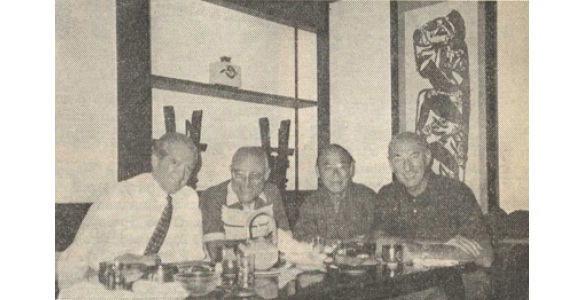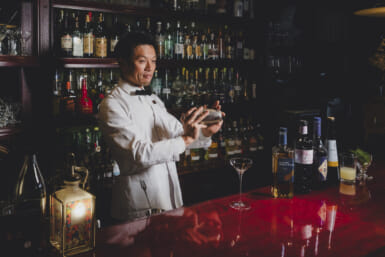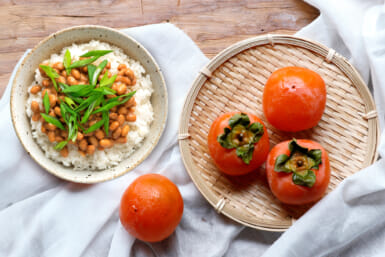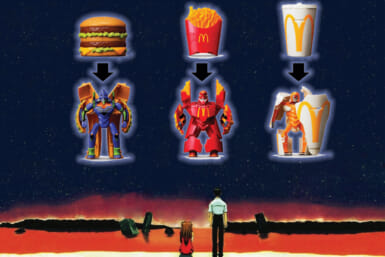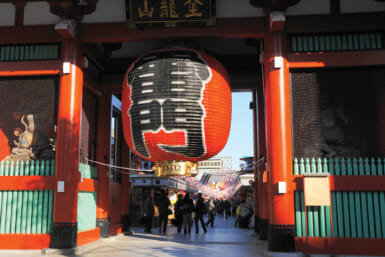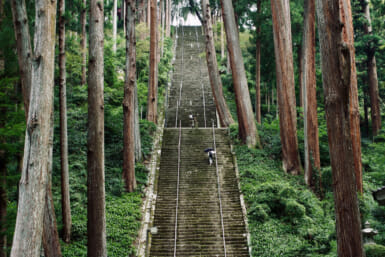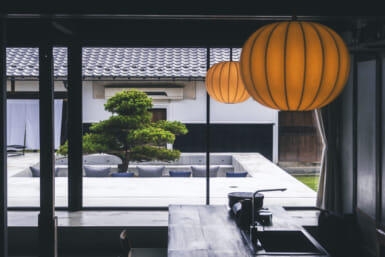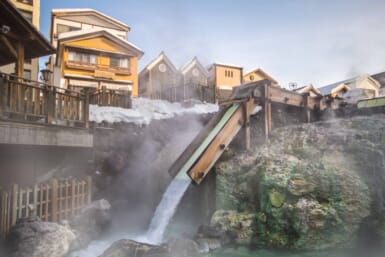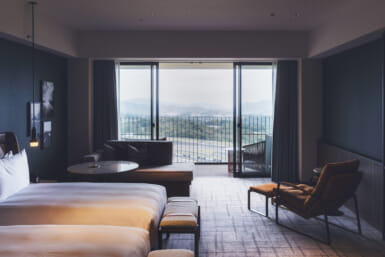It’s the answer to the question: What do you do about visiting firemen who insist on eating “real” Japanese food and you know they will gag at the night of raw fish? What I do is take them to Zakuro in the Jitensha Building across from the U.S. Embassy or one of its many branches, such as the one in the TBS Kaikan in Akasaka. But first I try to reserve a Japanese room well in advance, for its zashiki have huge wells under the table where you can dangle your legs and have no fear of developing housemaid’s knee.
Invariably, after the meal, the guests say something like, “I didn’t realize Japanese food could be so delicious.” I don’t tell them that all Japanese food can be delicious, though some may not be so appetizing by name, description and sight.
For Zakuro is very congenial to palates unaccustomed to dried seaweed and raw fish, even though the visitors may insist they like sushi. They’re probably referring to that abomination called “California roll.”
I must warn you. If you want to dine at Zakuro, you must make a reservation. And if you went a Japanese room, that reservation must be made days in advance. For it is invariably full. I have found from my experience. As for the Japanese room, I would say you need to call at least a day or two before. But the ambience of that room is worth the trouble, for your guests are impressed and go off thinking good thoughts about Japanese culture.
What makes Zakuro so popular is not only the tastiness of the food, but the reasonableness of the price. It is most famous for its shabu-shabu, a complicated dish consisting of thin slices of beef boiled (by yourself) in a bubbling bouillion; followed by vegetables, tofu and haruzame, the spaghetti-like substance made from vegetables; finally by a soup made from the remaining liquid and noodles.
To give you an idea of the price, there is a shabu-shabu lunch including an appetizer, a Japanese seasonal dish, shabu-shabu, pickles and a dessert for only 6,300 yen. When you realize that the finest of Japanese beef is used, you know what I mean by “reasonable.”
When I dine at Zakuro, though, the price is a bit higher, for I invariably order a second plate of meat for self and guests, and it’s the most expensive part of the meal. But I am addicted to meat cooked the shabu-shabu style and can eat three or four plates at a sitting, though good sense limits me to two. What happens, then, is that I only nibble at the rest of the dish: the delicious mixture of vegetables, tofu and haruzame. As for the pickles and dessert, I skip them entirely.
For those unfortunates who have not experienced this marvelous meal, let me describe it so that you can enjoy it vicariously. First, an appetizer, perhaps some sashimi, is served. As you are eating the fish, a kimono-clad waitress lights a fire under the shabu-shahu pot, which is filled with a broth, and puts a lid on it to get the boiling going.
When the broth begins to bubble, she brings out a plate of very thinly sliced beef for each person and a big bowl containing the vegetables, tofu and haruzame. She also places a small dish of gomadare (a sauce made of crushed sesame seeds) before you. A tarter sauce, ponzu, made of the juice of a special Japanese citrus fruit is also available.
Now you get to work, picking up a slice of meat and swishing it through the boiling liquid until it’s done to your satisfaction. Try listening for the sound of the swishing, which is supposed to resemble something like “shabu-shabu“; hence, the name. I’ve never heard but then your ears may be better than mine.
When the last of the meat is eaten, the waitress goes to work, filling the pot and its boiling bouillion with the vegetables, squares of tofu and haruzame. When they’re done, she lets you know by picking some out and putting them on your dish. From then on, it’s up to you; though she’s there to help the helpless.
Let me warn you about the tofu: It imprisons the heal. Unless you open it up to let the heat escape, you will experience a burning that you swear is hotter than the temperature of the sun. The scarred tongue and throat lasts for days.
When that part of the meal is over, the waitress places noodles in the pot. When they’re done, she makes a soup of the remaining liquid and the noodles. It is delicious. You finish off with pickles and dessert, usually a fruit of the season.
There are many other kinds of dishes you can get at Zakuro. Though I haven’t tried them all, those that I have sampled were delicious; so I assume they all are. There are Teriyaki Steak with salad, soup, rice and pickles for 2,600 yen; Batayaki or grilled thinly sliced sirloin beef served with mustard soy-sauce, salad, soup, rice and pickles for 2,200 yen; sukiyaki for 1,700 yen; and other such delightful comestibles at equally reasonable prices.
You cannot miss the Jitensha Building (Zakura is in the first basement). As I said, it’s right across from the U.S. Embassy. There’s a parking garage in the rear. Telephone number is 582-2661.

